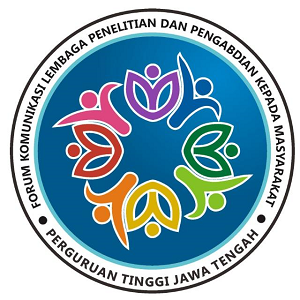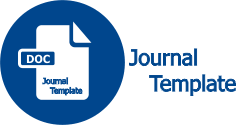INOVASI ORGANISASI SEBAGAI PEMEDIASI PARTIAL ANTARA PEMBELAJARAN ORGANISASI DENGAN KINERJA ORGANISASI (Studi Empiris Pada Kantor AkuntanPublik di Pulau Jawa)
DOI:
https://doi.org/10.33061/rsfu.v4i1.3408Abstract
Peneltian ini bertujuan untuk menguji secara empiris pengaruh pembelajaran organisasi terhadap kinerja organisasi dengan variabel inovasi organisasi sebagai variabel mediasi pada Kantor Akuntan Publik (KAP) di pulau Jawa. Penelitian ini menggunakan teknik survei kuesioner untuk pengumpulan data. Teknik sampling yang digunakan adalah random sampling. Data yang dapat dikumpulkan sebanyak 93 responden dan pengujian dilakukan dengan menggunakan Partial Least Square Structural Equation Model (PLS – SEM) berupa program WarpPLS 3.0.Hasil pengujian membuktikan bahwa komitmen untuk belajar (KUB) berpengaruh positif namun tidak signifikan terhadap kinerja organisasi (KIN); berbagi visi (BV) berpengaruh positif namun tidak signifikan terhadap kinerja organisasi (KIN); keterbukaan pikiran (KP) berpengaruh positif signifikan terhadap kinerja organisasi. Komitmen untuk belajar (KUB) berpengaruh positif tidak signifikan terhadap inovasi organisasi (IO); berbagi visi (BV) berpengaruh positif signifikan terhadap inovasi organisasi (IO); keterbukaan pikiran (KP) berpengaruh positif signifikan terhadap inovasi organisasi (IO) dan inovasi organisasi (IO) berpengaruh positif signifikan terhadap kinerja organisasi (KIN). Inovasi organisasi (IO) terbukti sebagai pemediasi parsial (kategori 20% sampai 80%) pengaruh antara keterbukaan pikiran (KP) dengan kinerja organisasi (KIN) dengan nilai VAF= 0,324.
Kata Kunci: Komitmen Untuk Belajar, Berbagi Visi, Keterbukaan Pikiran, Inovasi Organisasi, Kinerja Organisasi dan Kantor Akuntan Publik.
References
Agarwal, S., Erramilli, M. K., and Dev, C. S. 2003. Market Orientation and Performance in Service Firms: Role of Innovation. Journal of Services Marketing, 17(1), 68-82.
Anders Ortenblad, 2001. On Differences Between Organizatiol Learning And Learning Organization. The Learning Organization, Vol. 8, No. 3, MCB University Press – ISSN 0969-6474.
Argyris, C. and Schön D. A.. 1996. Organizational Learning II; Theory, Method and Practice. U.S.A.: Addison-Wesley Publishing Company.
Asil, S. M. N, Akhlagh, M. E dan Zahra Niknezhad Sheyjani, Z. N. 2014. Investigating The Role Of Organizational Learning And Organizational Innovation In Knowledge Management And Firm Performance Relationship. World Essays Journal / 1 (2): 31-34.
Baker, W. E., and Sinkula, J. M. 1999. The Synergistic Effect of Market Orientation and Learning Orientation on Organizational Performance. Journal of the Academy of Marketing Science, 27(4), 411-27.
Bhatnagar, J. and Sharma, A. 2005. The Indian Perspective of Strategic HR Roles And Organizational Learning Capability. The International Journal of Human Resource Management, 16 (9), 1711 - 1739.
Bontis, N., Crossan M. M., and Hulland J. 2002. Managing an Organizational Learning System by Aligning Stocks and Flows. Journal of Management Studies, 39(4), 437-69.
Calantone, Roger J, Tamer Cavusgil ve Yushan Zhao.2002. Learning Orientation, Firm Innovation Capability, and Firm Performance. Industrial Marketing Management, 31 (1), pp.515-524.
Cao, Guanming, F. Wiengarten, and P. Hurphreys. 2011. Towards a Contingency Recourse-Based Viewof IT BusinessValue. Systemic Practice and Action Research, New York. Vol. 24,Iss.1, pp.85.
Che Rose, R., Kumar, N. and Ong, G.P. 2009. The Effect of Organizational Learning on Organi-zational Commitment, Job Satisfaction and Working Performance. The Journal of Applied Business Research, 25(6).
Dishman, P. and Pearson, T. 2003. Assessing Intelligence as Learning within an Industrial Marketing Group: A Pilot Study’. Industrial Marketing Management, 32 (7), pp.615-620.
Dougherty, D. and Hardy, C. 1996. Sustained Production Innovation in Large, Mature Organisations: Overcoming Innovation-To-Organisation Problems. Academy of Management Journal, 39(5): 1120–1153.
Fontana, Avanti. 2011. Innovate We Can ? Manajemen Inovasi dan Penciptaan Nilai Individu, Organisasi dan Masyarakat, Edisi Revisi. Jakarta, Cipta Inovasi Sejahtera.
Gardin, J., and Greve, J. 2008. The Appropriateness of Statistical Methods for testing Contingency Hypotheses in Management Accounting Research. Accounting, Organizations and Society, Vol. 33, No. 5, pp. 995–1009.
Ghozali, I., dan Latan, H. 2012. Partial Least Square: Konsep, Teknik dan Aplikasi Program SmartPLS 3.0M3. Badan Penerbit Universitas Diponegoro Semarang.
Goh, S. 2003. Improving Organizational Learning Capability: Lessons from two case studies. The Learning Organization, 10 (4), 216-27.
Hage, J. T. 1999. Organizational Innovation and Organizational Change.Annu. Rev. Sociol. 25:597-622.
Hair, Jr. J.F., C. Ringle, and M. Sartstedt. 2011. An Assessment of The Use of Partial Least Squares in Marketing Research. Journal of Academy of Marketing Scince. Vol.44, pp. 414-431.
________ . 2013. A Primer on Partial Least Square Structural Equation Modeling (PLS-SEM). SAGE Publications, Incorporated.
Hajipoor B, Kord M. 2011. The Effects Of Strategic Alliance On Relations Between Organizational Learning, Innovation And Financial Act Of Company. Magazine of Studies of Improving Management and Innovation, Number 64, pages 141-166.
Hurley, R. F., and Hult, G. T. M. 1998. Innovation, Market Orientation, and Organizational Learning: An integration and Empirical Examination. Journal of Marketing. Vol. 62, No.1, pp. 42-54.
Jimenez-Jimenez, D. and Sanz-Valle, R. 2011. Innovation, Organizational Learning and Performance. Journal of Business Research, 64 (4), 408-417.
Kiziloglu, M. 2015. The Effect of Organizational Learning on Firm Innovation Capability: An Investigation in the Banking Sector. Global Business and Management Research: An International Journal, Vol. 7, No. 3, 17- 33.
Kock, N. 2012. WarpPLS 3.0 User Manual. Laredo, TX: ScriptWarp Systems.
______. 2013. Advance Mediating Effect Test, Multi-Group Analysis and Measurement Model Assessments in PLS-based SEM. Laredo, TX: ScriptWarp Systems.
Mahmood, S., Qadeer, F., and Ahmad, A. 2015. The Role of Organizational Learning in Understanding Relationship between Total Quality Management and Organizational Performance. Pakistan Journal of Commerce and Social Sciences, Vol. 9(1), 282-302.
Razavi, S., H. and Attarnezhad, O. 2013. Management of Organizational Innovation. International Journal of Business and Social Science Vol. 4 No. 1, 226-232.
Sekaran, Uma. 2003. Research Methods For Business: A Skill-Building Approach, Fourth Edition, Prentice Hall, Englrwood Cliffs, NJ.
Sinkula, J.M., Baker W.E. and Noordewier T.A. 1997. Framework for Market-Based Organizational Learning: Linking Values, Knowledge, and Behavior. Journal of Academy Marketing Science, 25 (4), 305- 18.
Sugiyono , 2010. Metode Penelitian dan R & D. Bandung:Alfabeta.
Sholihin, M., dan Ratmono, D. 2013. Analisis SEM-PLS dengan WarpPls 3.0 Untuk Hubungan Nonlinier Dalam Penelitian Sosial dan Bisnis. Yogyakarta, ANDI.
Therin, F. 2003. Organizational Learning and Firm Innovation in High-Tech Small Firms, 36th Hawaii International Conference on System Science, USA.
Tippins, M.J. and Sohi, R.S. (2003). IT Competency and Firm Performance: Is Organizational Learning a Missing Link?. Strategic Management Journal,24(8),745-761.
Yeung, A.C.L., Lai, K.H. and Yee, R.W.Y. 2007. Organizational Learning, Innovativeness And Organizational Performance: A Qualitative Investigation. International Journal Of Production Research, 45(11), 2459-2477.
Downloads
Published
Issue
Section
License
- Hak publikasi atas semua materi informasi yang tercantum dalam situs jurnal ini dipegang oleh dewan redaksi/editor dengan sepengetahuan penulis. Pengelola Jurnal akan menjunjung tinggi hak moral penulis.
- Aspek legal formal terhadap akses setiap informasi dan artikel yang tercantum dalam situs jurnal ini mengacu pada ketentuan lisensi Creative Commons Atribusi-NonCommercial-No Derivative (CC BY-NC-ND), yang berarti bahwa hanya dengan izin penulis, informasi dan artikel Jurnal PKM dapat didistribusikan ke pihak lain dengan tanpa merubah bentuk aslinya untuk tujuan non-komersial.
- Setiap terbitan Jurnal PKM, baik cetak maupun elektronik, bersifat open access untuk tujuan pendidikan, penelitian, dan perpustakaan. Di luar tujuan tersebut, penerbit atau pengelola jurnal tidak bertanggung jawab atas terjadinya pelanggaran hak cipta yang dilakukan oleh pembaca atau pengakses.



















